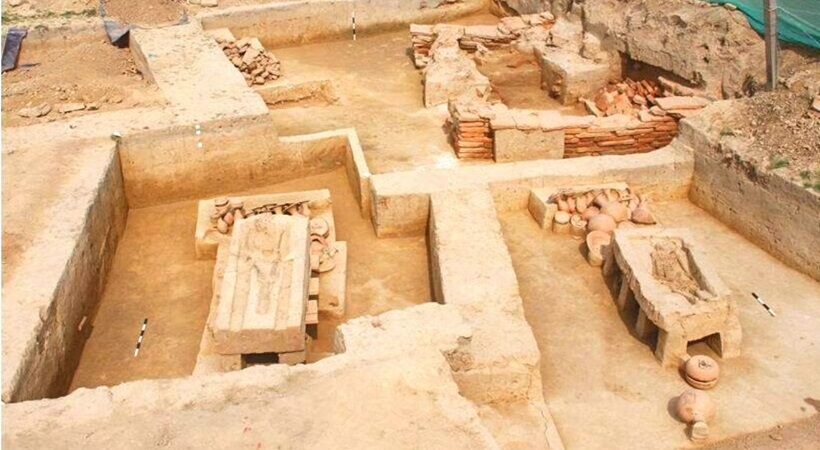The excavations at Sinauli in the Baghpat district of Uttar Pradesh have renewed the debate on Aryan migration theory. Revealing multiple burial remains such as bronze weapons, coffin burials, helmets and carts, the site has been recently dated by the Birbal Sahni Institute at 1900 BCE. The site is being associated with the late Harappan phase or the Copper hoard culture.
However, after the finding of three copper-coated carts, the ASI director Sanjay Manjul proclaimed the carts to be “chariots”, further stating “the rituals relating to the Sinauli burials showed a close affinity with Vedic rituals” and that the “dating of Mahabharata is around 1750 BCE”. These statements were made without any conclusive proof and other archaeologists are still characterizing the chariots as bullock pulled carts, not horse-driven ones.

These findings generated a lot of excitement in the Indian media. India Today reported that the chariots evoked the images of horse-drawn carriages from mythological television shows. Aaj Tak went further to proclaim a connection with the “Mahabharata age”. This is characteristic of a new trend where religious history is being portrayed as literal history. However, it was the right-wing publications, which reported the finding of the excavation as a major blow to the “Aryan Invasion theory”.
The theory of Aryan migration was put forward by the British archeologist Mortimer Wheeler based on his observations of the unburied skeletal remains at Mohenjo-daro, an urban Harappan site excavated in the 1920s. According to Wheeler, Aryan migration was a hostile event, which caused the decline of the Indus Valley Civilization. However, this position was discarded after finding no evidence of wars.
The skeletons were found to be hasty interments, not massacred victims. Wheeler himself also nuanced this interpretation in later publications that “This is a possibility, but it can’t be proven, and it may not be correct”. Although the theory of ‘invasion’ was discredited almost a century ago, critics of the Indo-Aryan Migration theory continue to present the theory as an “Aryan Invasion Theory”.
The Aryan Invasion theory was discarded and replaced with a more nuanced understanding of the Aryan migrations with decades of study and research. Experts put forward the theory of migration and acculturation, through which Indo-Aryan language and culture were spread in South Asia around 1500 BCE. In the past century, a massive amount of philological, genetic and archaeological data has emerged, backing the theory of Aryan migrations.
Furthermore, experts have contested the relationship of the Sinauli cart with the Vedic culture. The chariot wheel of the Vedic culture is typified by a spoked wheel, whereas the wheels of the Sinauli chariot is a solid one with no spokes. And according to the philologist Michael Witzel, even if the presence of horses is confirmed at the site, it will not make the Indus Valley civilization teeming with horses, as the later Rig Vedic culture indeed is.



















